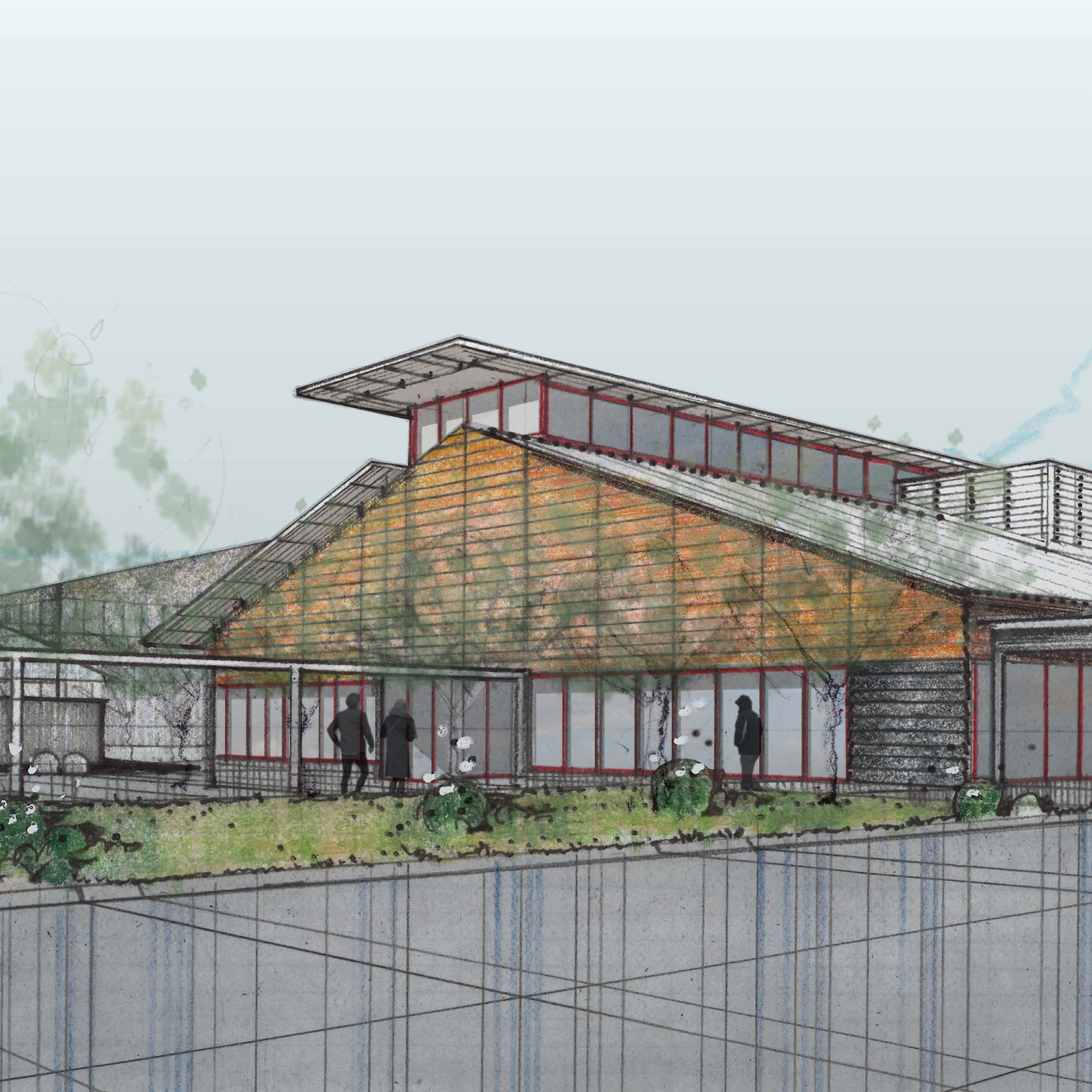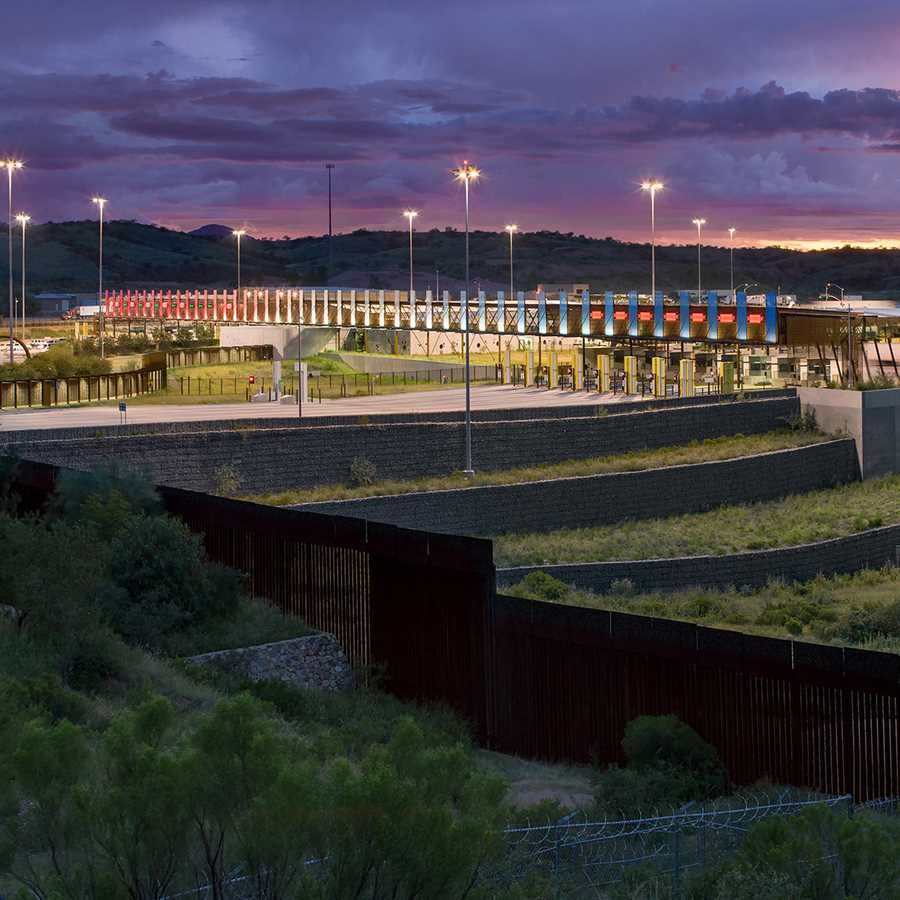
Otay Mesa Land Port of Entry
Dignified passage for people and commerce
Client
U.S. General Services Administration
Location
San Diego, California
Size
47 acres
Expertise
Public
Delivery Method
Design-Build
Certifications
Tracking LEED Gold
Project Team
Just south of San Diego, the third busiest land port of entry in the United States hums with traffic crawling through the small community of Otay Mesa. Like many of the outdated ports along the southern border, the Otay Mesa LPOE was constrained by its site and in desperate need of a new vision for moving people and connecting the two countries. The existing campus was designed over decades, fractured into disparate parts and requiring a comprehensive master plan to tie the pieces back together. Our modernization of the port improves the operations of the campus and creates a more dignified experience for visitors, staff, and the neighboring community—all while maintaining port operation during construction.
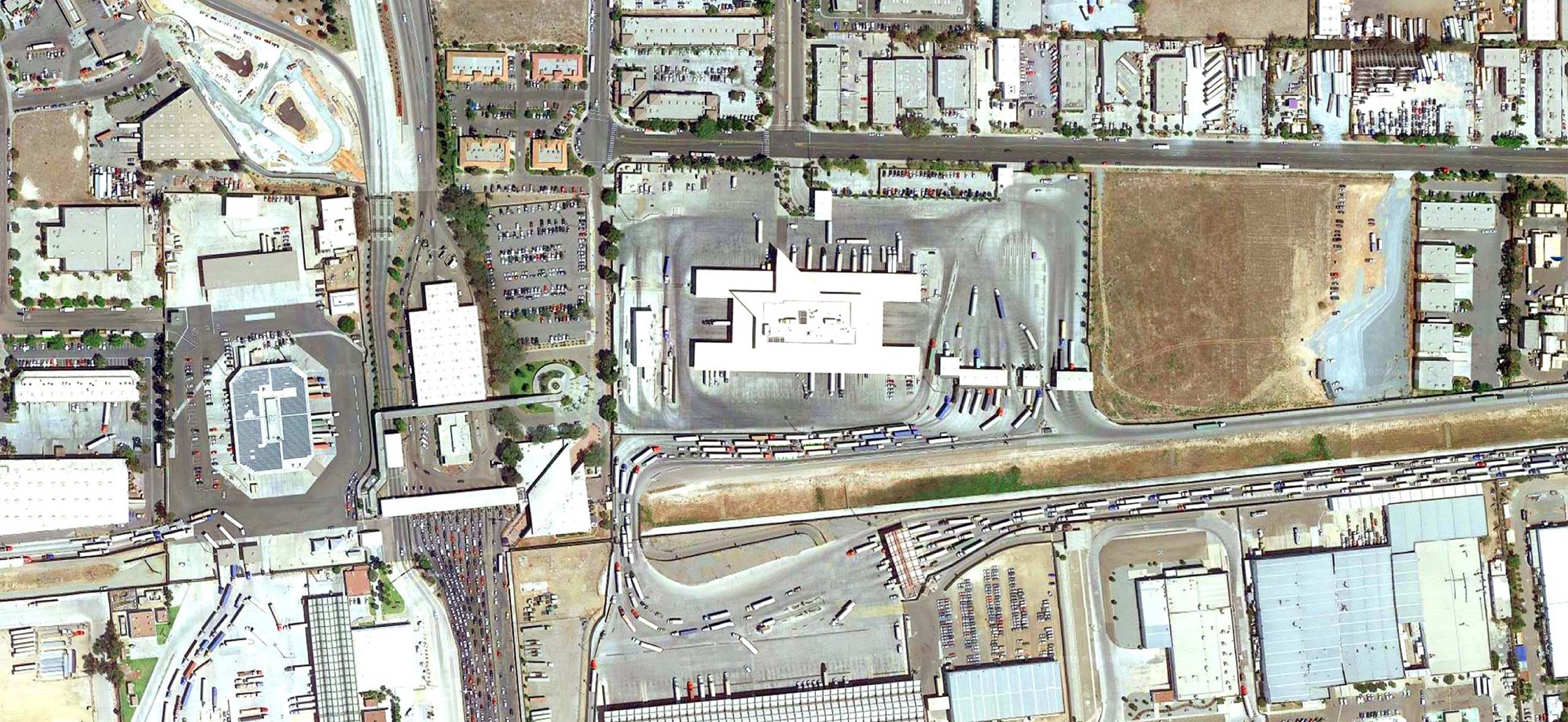
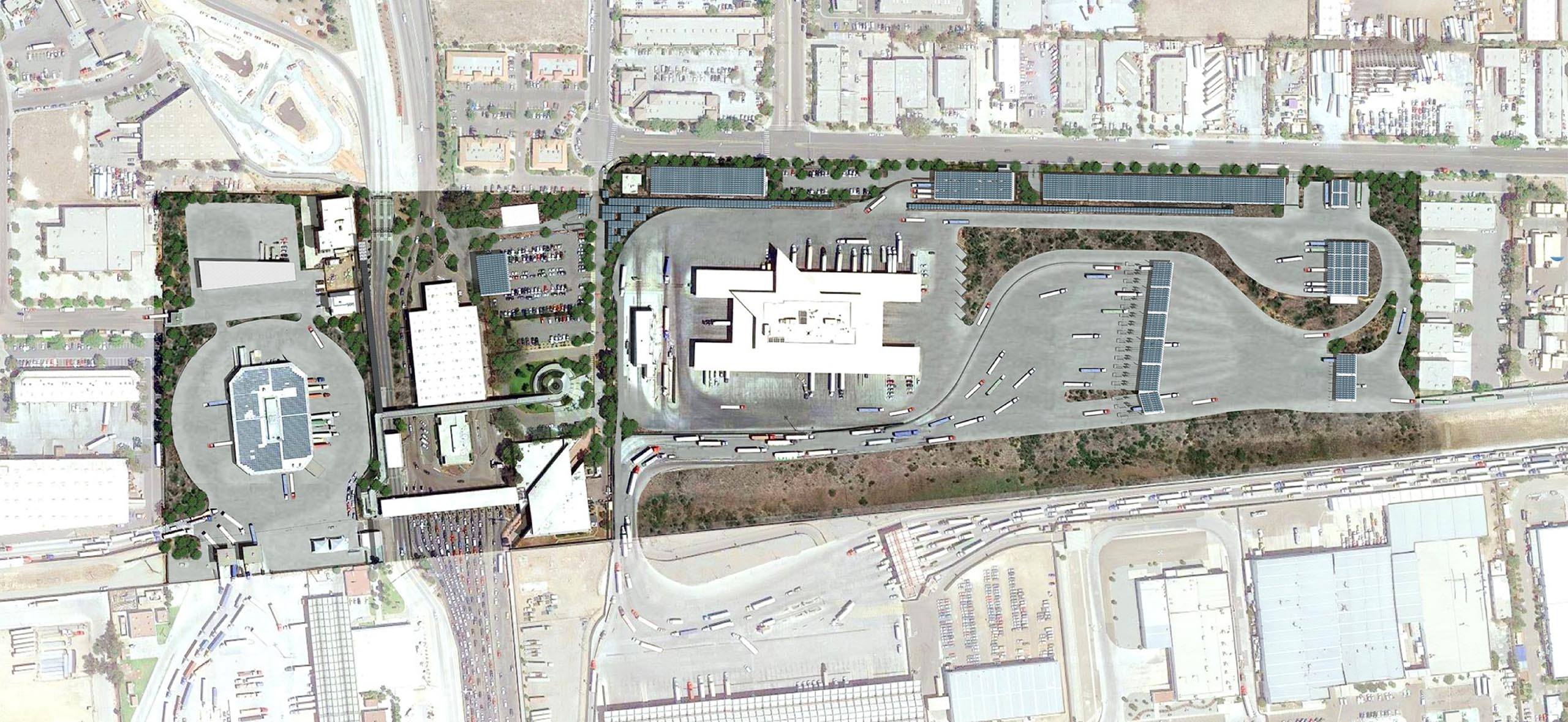
The new campus design reorganizes the site to simplify navigation and craft better spaces for all users. New public-facing facilities are placed closest to the community and enhance the public streetscape along the north edge of the site. Behind these new buildings, the existing commercial truck processing area is expanded to improve traffic flow through the port. Pedestrian circulation is realigned to streamline movement through the site and welcome visitors with increased shade and enhanced landscaping along their route.


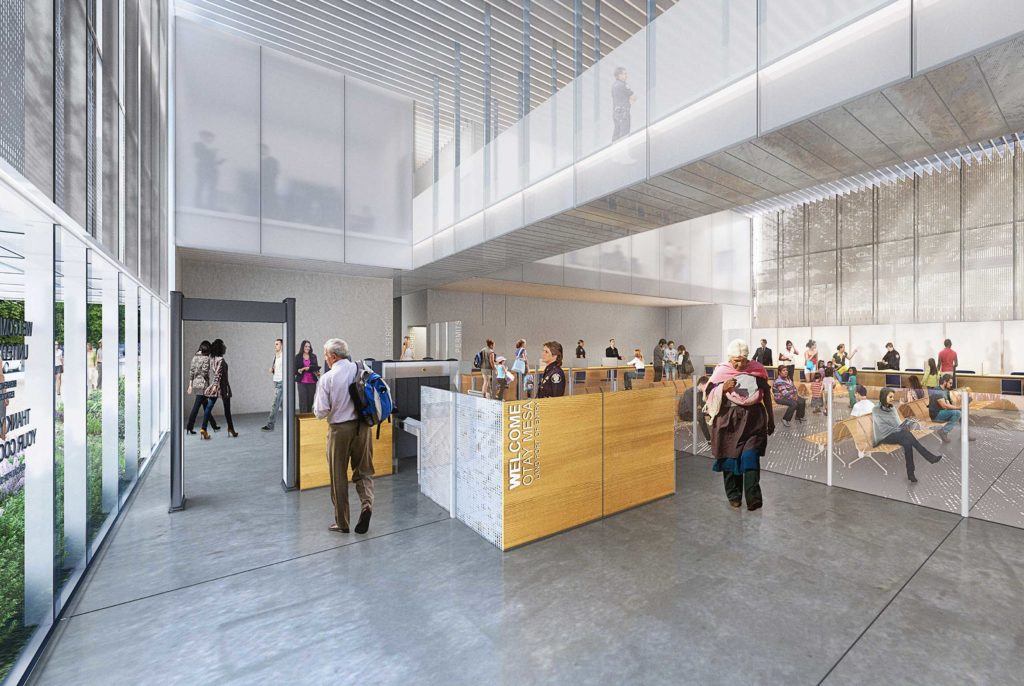
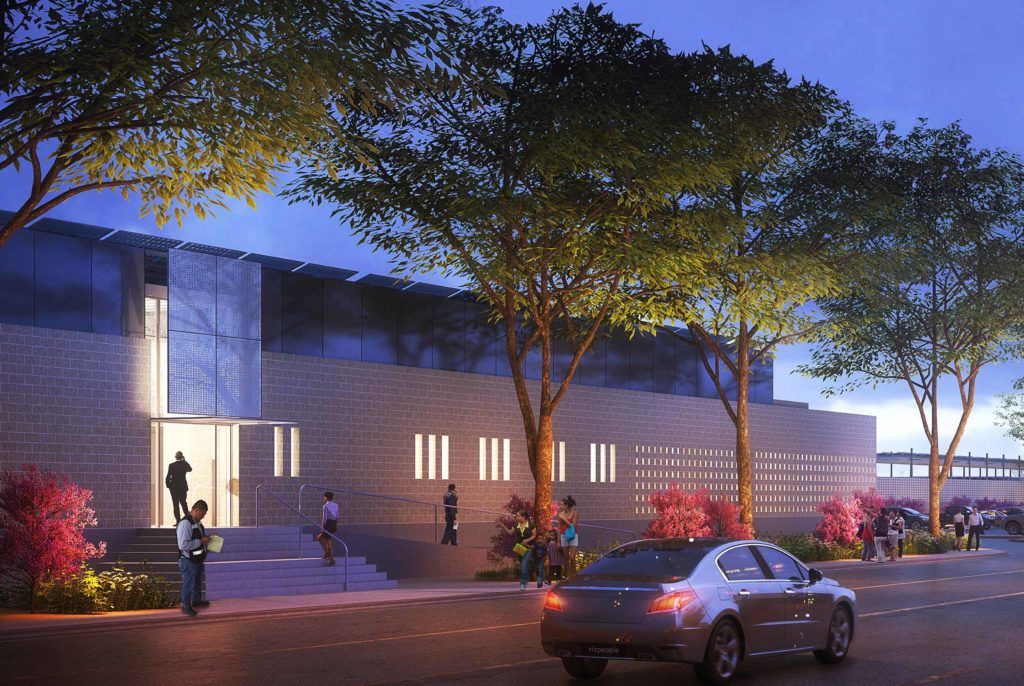
The reimagining of the port is grounded in responsible, sustainable environmental design. New buildings feature highly energy-efficient envelopes and glazing systems that are fine-tuned to provide abundant daylighting to interior office spaces. Existing buildings salvage and reuse as much material as possible, and new building exteriors are clad simply in durable, locally-sourced, and low-maintenance materials like concrete masonry and aluminum panels. Extensive areas throughout the site that were previously paved with concrete or asphalt have been replaced with native, drought-tolerant landscaping, lowering the heat island effect in pedestrian areas and utilizing on-site harvested rainwater. Shade canopies over pedestrian paths support an array of solar panels to offset the campus’s energy use. These strategies support the project’s goals to achieve LEED Gold, SITES Silver, and Net Zero Energy certifications.

